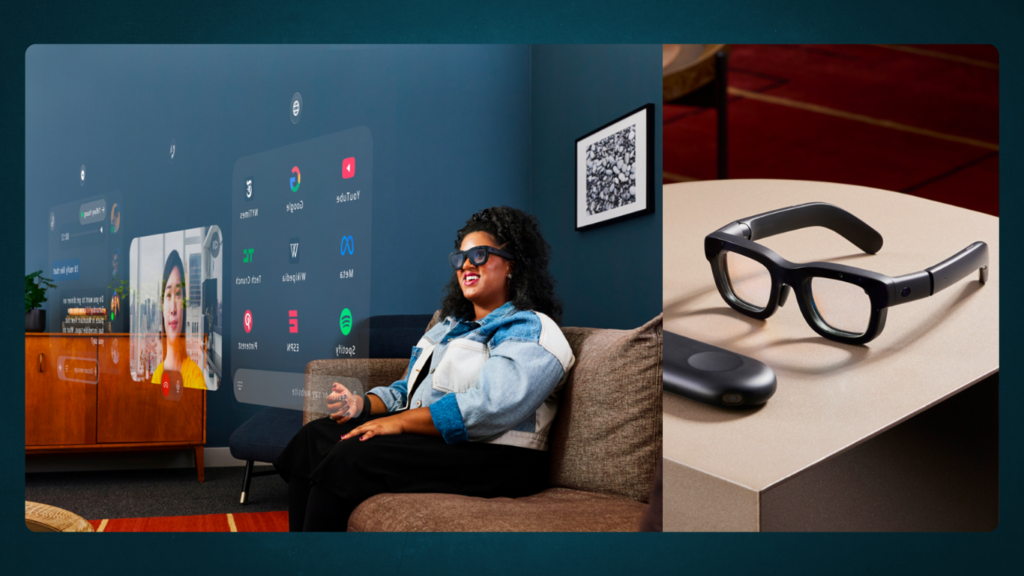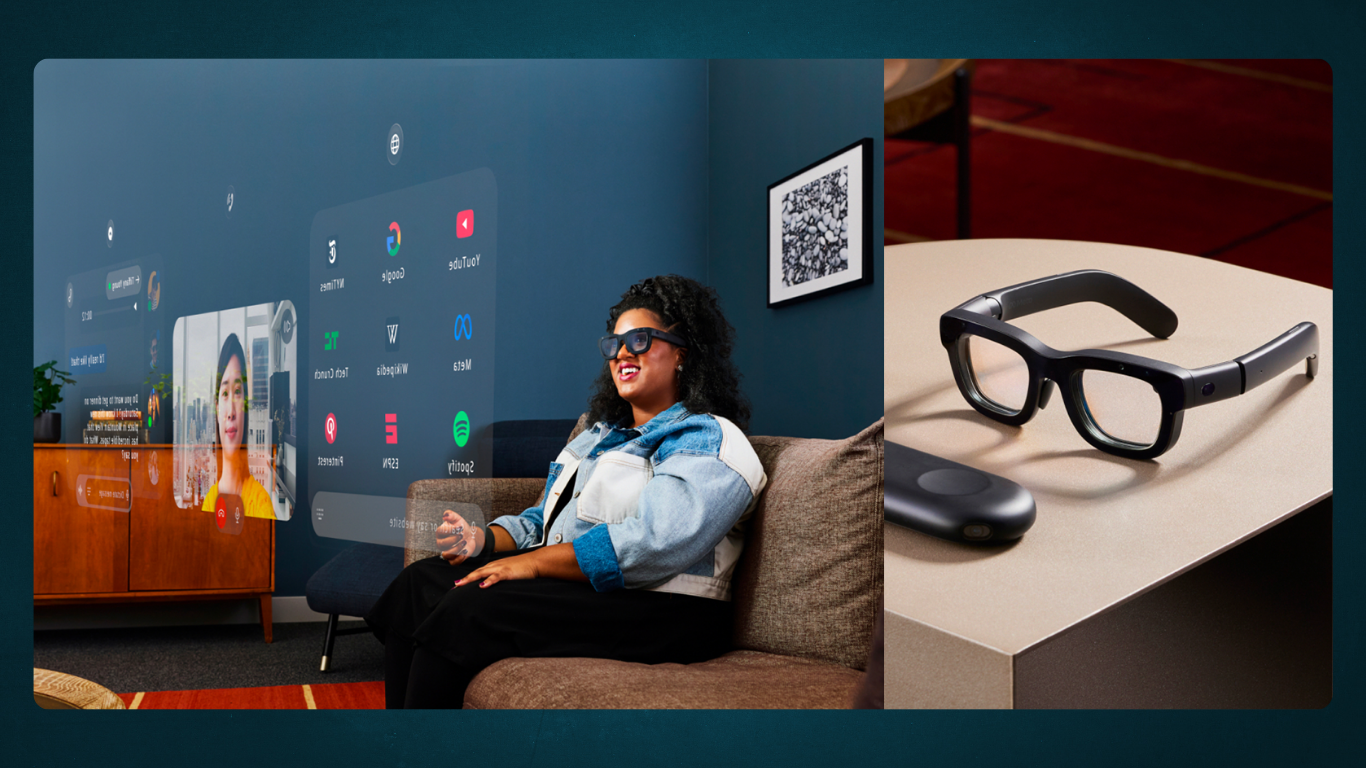As wearable technology becomes more interactive and adaptable, more people are jumping on board. One of the most promising developments in this space is augmented reality (AR) glasses—tech that’s up-close, personal, and poised to change how we interact with the world.
Recently, Meta introduced its latest AR glasses prototype, called Orion. At first glance, they look like regular reading glasses, but they’re equipped with some impressive technology. Using holographic projection, these glasses can overlay digital graphics directly onto the real world.
Mark Zuckerberg, CEO of Meta, has called Orion “the most advanced glasses the world has ever seen.” He even hinted that these glasses could eventually replace smartphones as the main way we communicate. But is that just corporate hype, or could AR glasses really make our lives better?
Why AR Glasses?

To understand Meta’s claims about Orion, it’s essential to look at what makes these AR glasses stand out. Meta describes Orion as having miniaturized components, a wide field of view, and advanced holographic displays—features that supposedly bring users an entirely new way of interacting with computers:
“Compelling AR experiences, creating new human-computer interaction paradigms […] one of the most difficult challenges our industry has ever faced.”
The glasses are equipped with Meta AI, a smart assistant that can respond to voice commands, track eye and hand movements, and make use of a wristband that allows users to swipe, click, and scroll effortlessly.
These features are designed to make AR glasses more user-friendly and appealing for mainstream use. However, there are still several challenges Meta will need to overcome.
Addressing the Challenges
For AR glasses like Orion to go mainstream, Meta will have to address a few critical issues:
- User Comfort: People need AR glasses that fit comfortably and work with their existing prescription lenses without hassle.
- Physiological Issues: Comfort is key. The glasses must avoid overheating, prevent dizziness, and remain comfortable even with extended use.
- Practical Usability: Battery life, data security, and display quality are crucial factors that could affect user adoption.
- Social Acceptance: Privacy concerns and ensuring that wearing the glasses feels socially acceptable are just as important as the technical aspects.
These challenges might sound familiar—they’re similar to the hurdles that smartphones faced when they first came on the scene. Initially, smartphones were only embraced by tech enthusiasts, but eventually, they became indispensable tools for billions. AR glasses could follow a similar journey—starting with niche adoption before gaining mainstream popularity.
Old Tech, Fresh Vision

The technology behind Orion isn’t completely new—it’s actually the latest evolution of concepts that have been in the works for decades.
In the 1960s, computer scientist Ivan Sutherland laid the foundation for AR by creating the first augmented reality head-mounted display. The 1980s saw Canadian inventor Steve Mann develop the first prototype of AR glasses. During the 1990s, researchers and tech companies began refining AR for industrial and military purposes.
Fast forward to 2013, and Google took AR glasses to consumers with Google Glass. Despite all the initial hype, Google Glass didn’t catch on. Privacy concerns, high cost, limited features, and a lack of clear purpose made it a tough sell.
But companies like Meta, Apple, and Microsoft weren’t discouraged. They saw the potential in AR and continued to develop it—each aiming to create a product that would appeal to everyday users.
Building a Digital Ecosystem
Meta is trying to do more than just build AR glasses—they want to create a whole digital ecosystem around Orion, much like Apple did with the iPhone. This means using AR glasses not just for entertainment, but for more practical purposes like virtual education, remote work, and real-time collaboration.
The holographic display on Orion could overlay digital information onto the real world, making communication more natural and intuitive. Imagine being able to see directions, notifications, or even work-related data, all without looking at your phone—this hands-free interaction could change the way we approach technology.
Creative Destruction: The End of Smartphones?
We’re already seeing AR glasses make an impact in industries like healthcare, logistics, and manufacturing, where they help with things like hands-free access to information and reducing errors.
Meta has plans to launch Orion to the general public by 2027. By then, artificial intelligence will have advanced even further, enabling virtual assistants to interact with our surroundings in ways we can only dream of now. The convergence of the digital, physical, and artificial worlds could make carrying a bulky smartphone feel unnecessary.
This idea of “creative destruction”—where new technology disrupts and replaces older tech—seems to be in full swing. And if market analysts are right, the AR and VR headset industry could be worth a whopping $370 billion by 2034.
But Will This Actually Benefit Us?
The big question is whether AR glasses will really improve our lives. Looking at the smartphone era can offer us some insight.
Smartphones have undoubtedly made us more connected, given us instant access to information, and provided productivity tools that are hard to imagine living without. But they’ve also brought distractions, anxiety, and an unhealthy attachment to screens.
Meta envisions AR glasses being a solution to this dilemma, enhancing productivity while minimizing distractions. Consulting firm Deloitte agrees, suggesting that AR glasses will provide hands-free access to data, faster communication, and improved collaboration. They also see potential for these glasses to help reduce human error, visualize data more clearly, and even monitor health and wellbeing.
However, for these benefits to be realized, companies like Meta need to overcome significant obstacles—privacy concerns, information overload, and ensuring the glasses fit seamlessly into society.
A Glimpse of the Future
In the end, whether Meta’s Orion AR glasses will actually replace our smartphones will depend on how well they can fit into our daily routines. Much like smartphones have become extensions of ourselves, AR glasses will need to integrate seamlessly into our lives to succeed.
AR glasses offer an exciting glimpse into a future where we can switch effortlessly between the physical and digital worlds. Imagine getting real-time directions, interacting with friends through holographic calls, or accessing work information—all while staying completely hands-free.
It’s clear that AR glasses have potential, but turning this vision into reality means making the technology not just advanced, but also practical, accessible, and beneficial for everyday users. The coming years will be crucial in determining whether AR glasses are indeed the next big leap in personal tech or just a cool idea with limited reach.

Subtly charming pop culture geek. Amateur analyst. Freelance tv buff. Coffee lover
